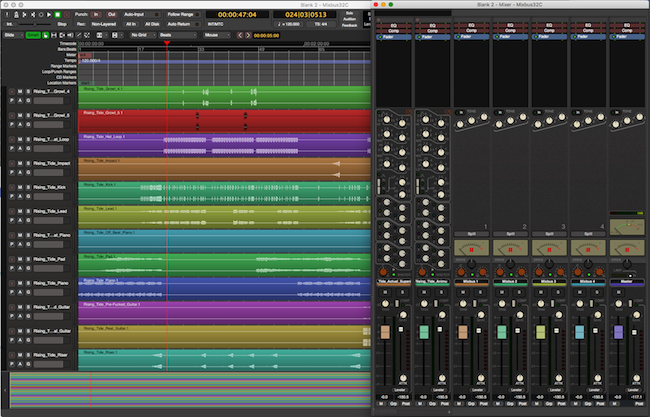

Pultec EQ), the above options are far more flexible. Try and go for a digital parametric EQ here. I primarily use FabFilter Pro-Q 3, but here is a more comprehensive list of options: When used carefully on your mix bus, it can help your mix sing. You want something that shapes the dynamics effectively, and each will leave a sonic imprint on your mix.ĮQ is one of the most powerful mixing tools in general. Picking a good compressor is paramount when processing your mix bus. Here are a few suggestions for plugins you can use on your mix bus: A compressor

Recommended: Mixing For Producers The Gear You’ll Need: A Compressor, Parametric EQ & Mid/Side EQ Improve your mix to begin with, don’t rely on mix bus processing alone. Mix bus processing addresses the overall make-up of the mix – if you’re trying to fix finite details on the mix bus, you will end up doing so at a compromise for adjoining elements within the mix. If you’re seeking to correct your mix on a micro-level, you should address that element independently of the mix bus. Honesty, communication and understanding are the best policies when mixing a record – both with yourself and any other parties involved if you’re working with a team. Make notes of why you may like one over the other, and let that be known to other people you show if you’re seeking feedback.

If you’re unsure if it’s helping the mix, or if it will tie the mastering process down, print two versions one with and one without. Ahead of mastering, you want your best presentation of the mix – one that you’re proud of and that you can honestly say represents the music in its best light, so if you need to use a mix bus to do that, so be it.Īs the saying goes, if it sounds good, it sounds good. If it helps you tell the story of the mix better, I’m all for it being left on. Here’s my take – the mix bus is a channel of audio in your mixing session, therefore the freedom to process it improving the connection and overall sound of your mix is fair game. People who mix into a processing chain often see it as part of the their style as a mixing engineer, imprinting a sonic character that sounds like ‘them’.Īs a mastering engineer who works with the two-track (stereo mix) supplied, I’m often asked what my thoughts on mix bus processing are – questions like whether or not engineers and producers should leave that processing on or off ahead of mastering. Finally, some will mix straight into the bus allowing it to shape and “set the tone” for the rest of the mix.Neither is it a necessity to a great mix. People in this camp look at it as another tool to moving the needle forward. Some take a measured approach and will use a mix bus carefully considering its impact on the overall presentation of the mix.Some look at it with caution and opt to never use it, vouching that if you can’t get it right “in the mix”, that you shouldn’t even bother trying to lean on mix-bus processing to improve what otherwise might be a lacklustre mix.However, mix bus processing is a polarizing topic: But don’t get mix bus processing confused with mastering!Īny processing that occurs on this channel, outside of a mastering context, is called mix bus processing. In many DAW’s, this is called the ‘Master’ track. In a nutshell, the mix bus is the final track in your DAW that all audio is routed to.
MIXBUS 4 PANNING CHANNELS FOR FREE
Download for free Cue, mix bus processing!


 0 kommentar(er)
0 kommentar(er)
